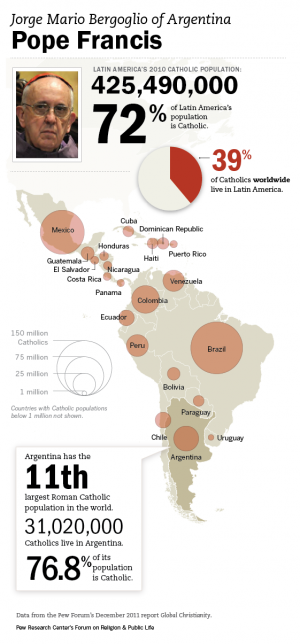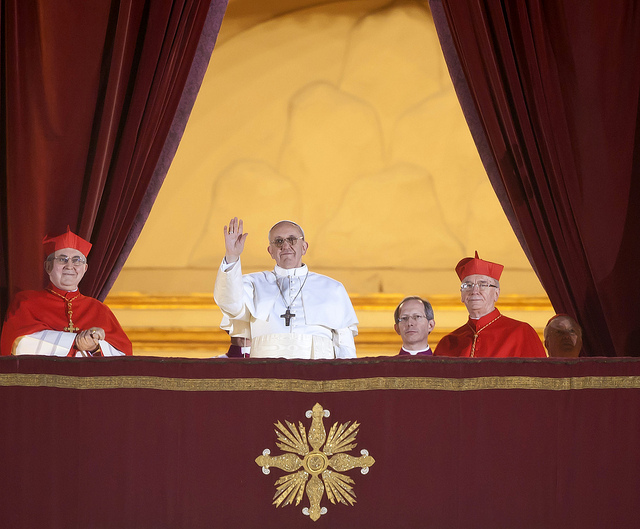Click through the map below - produced by The Globe and Mail, using 2010 data from the Pew Forum on Religion and Public Life - to find the size of each country's Catholic population as a percentage of its overall population.
 So it wasn't mere coincidence that the College of Cardinals on Wednesday chose Jose Mario Bergoglio of Argentina to be the church's first Latin American leader and its only non-European pope in more than 1,200 years. In electing Pope Francis - as he's now known - the cardinals made a statement that the future of the Catholic Church is based in the global south.
So it wasn't mere coincidence that the College of Cardinals on Wednesday chose Jose Mario Bergoglio of Argentina to be the church's first Latin American leader and its only non-European pope in more than 1,200 years. In electing Pope Francis - as he's now known - the cardinals made a statement that the future of the Catholic Church is based in the global south.
"As you know, the duty of the conclave was to appoint a bishop of Rome," the newly anointed pope said from the balcony of St. Peter's Basilica as throngs of ecstatic followers cheered below. "And it seems to me that my brother cardinals have gone to the ends of the earth to find one. But here I am."
Born to Italian immigrant parents and raised in Buenos Aires, Pope Francis - a Jesuit - is not likely to lead the church in any radically different philosophical direction from his predecessor, Pope Benedict XVI. The two leaders are both conservative and fairly consistent in their opposition to divisive social issues like birth control and homosexuality.
Nevertheless, Pope Francis' ascendancy marks a major turning point in the trajectory of the church, an acknowledgement that the demographics of its congregants have changed dramatically over the last century, and even in the past several decades.
In 1910, 65 percent of Catholics were European, 24 percent were from Latin America and the Caribbean, and less than 1 percent were from Africa, according to the Pew Forum. A century later, in 2010, only about 24 percent of Catholics were Europeans, while roughly 40 percent were Latin American. Africa, meanwhile, now has the fastest growing Catholic population in the world - rising from 45 million in 1970 to 176 million in 2012 - with Asia a close second.



